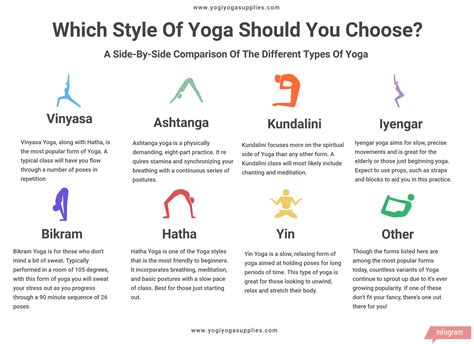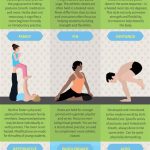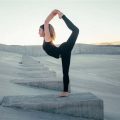Unlocking the Right Yoga Style for You: 5 Key Considerations
Yoga is a transformative practice with various styles that cater to different goals, fitness levels, and personal preferences. Whether you’re looking to improve flexibility, reduce stress, or deepen your spiritual practice, choosing the right yoga style is crucial. This guide outlines five essential factors to help you navigate through the many yoga styles available and find the perfect fit for your individual needs.
1. Understanding Your Goals: The Foundation of Yoga Style Choice
Before diving into specific yoga styles, it’s essential to first consider your personal goals. Are you aiming for physical fitness, mental relaxation, or spiritual growth? Different styles of yoga serve different purposes, and aligning your choice with your goals will ensure you maximize the benefits of your practice.
- For Physical Strength & Flexibility: Dynamic styles like Vinyasa or Ashtanga are great for those seeking to build strength, improve flexibility, and increase endurance.
- For Stress Relief: If relaxation and stress management are your priorities, you might want to explore gentler forms like Yin or Hatha yoga.
- For Spiritual Development: If you’re more interested in meditation and mindfulness, Kundalini or Integral yoga might be a better match.
By identifying your primary objectives, you’ll have a clearer idea of which yoga style aligns with your vision for your practice. But your goals may evolve, and that’s why it’s equally important to be open to experimenting with different styles over time.
2. Your Physical Condition: Adapting to Your Body’s Needs
Yoga is inclusive, but it’s important to consider your current physical condition before diving into a specific style. Some styles are more intense, while others are more therapeutic and accessible to individuals with injuries or physical limitations. Here’s a breakdown of how various yoga styles can adapt to different physical needs:
| Yoga Style | Level of Intensity | Physical Considerations |
|---|---|---|
| Ashtanga | High | Requires a good level of strength and flexibility, ideal for intermediate to advanced practitioners |
| Yin | Low | Focuses on passive stretches, suitable for beginners and individuals with joint issues |
| Bikram | High | Practiced in a heated room, this style requires cardiovascular endurance; consult a doctor if you have heart conditions |
| Restorative | Very Low | Ideal for those recovering from injury or experiencing chronic fatigue |
| Vinyasa | Moderate to High | Great for those with moderate fitness levels; customizable for varying intensity |
For beginners or those with injuries, Restorative Yoga and Hatha Yoga provide gentle and foundational poses. In contrast, experienced practitioners looking for a challenge may enjoy the fast-paced, cardiovascular workout of Vinyasa or Ashtanga Yoga. Keep in mind, yoga is adaptable, and instructors can modify poses to suit different needs.
3. Class Environment: Group, Private, or Home Practice
Another critical factor in choosing the right yoga style is deciding what kind of practice environment suits you. Yoga can be practiced in a variety of settings—each providing a different experience. Consider the following:
- Group Classes: Ideal for beginners who need guidance and motivation, group classes offer a social environment with an instructor leading the practice.
- Private Sessions: For those seeking personalized attention, private yoga lessons can cater to individual needs, especially if you’re working on specific goals like injury recovery or advanced poses.
- Home Practice: Online yoga classes and personal home practice allow for flexibility in timing, style selection, and the ability to practice at your own pace.
Each environment offers its pros and cons. Group classes build a sense of community and provide immediate feedback, whereas home practice allows for flexibility and convenience. Reflect on how important these factors are in your yoga journey, especially if you value structure and personal attention.
4. The Role of Yoga Teachers: Expertise and Teaching Style
The yoga instructor you choose can significantly influence your experience, regardless of the style you practice. Consider the teaching style and expertise of your instructor:
- Certified and Experienced Instructors: A teacher’s credentials matter. Look for certified instructors with extensive teaching backgrounds, especially in specific styles like Ashtanga or Kundalini.
- Teaching Approach: Some teachers emphasize alignment and posture correction, while others might focus on the spiritual aspects of yoga. Align your teacher’s strengths with your goals to get the most out of your practice.
- Accessibility: If you have physical limitations, it’s essential to choose an instructor who can provide modifications and adjustments to suit your needs.
Researching instructors and attending different classes can help you find the right teacher who matches your energy, values, and teaching preferences. Your teacher can make or break your yoga journey, so choose wisely.
5. Time Commitment: Choosing Yoga Styles That Fit Your Schedule
Yoga styles also differ in the amount of time they demand. Some require significant time and discipline, while others can be incorporated into a busy schedule with minimal disruption. Here’s how different yoga styles match different time commitments:
| Yoga Style | Typical Class Duration | Recommended Frequency |
|---|---|---|
| Ashtanga | 90 minutes | Daily practice is recommended |
| Vinyasa | 60-75 minutes | 2-4 times per week |
| Hatha | 60 minutes | 2-3 times per week |
| Yin | 60 minutes | 1-2 times per week |
| Bikram | 90 minutes | 3-5 times per week |
For busy professionals, styles like Vinyasa or Hatha can be done a few times a week, with shorter class durations. If you’re looking for a deeper commitment, styles like Ashtanga or Bikram offer more intensive daily practices that require a higher level of dedication. Consider your current schedule and how much time you’re willing to dedicate to yoga.
Conclusion: Finding the Perfect Yoga Style for You
Choosing the right yoga style is a personal journey. It depends on your goals, physical condition, preferred learning environment, instructor compatibility, and available time. No matter where you start, yoga is a flexible practice that grows with you. Don’t be afraid to experiment with different styles, teachers, and environments until you find the combination that truly resonates with your body and mind.








